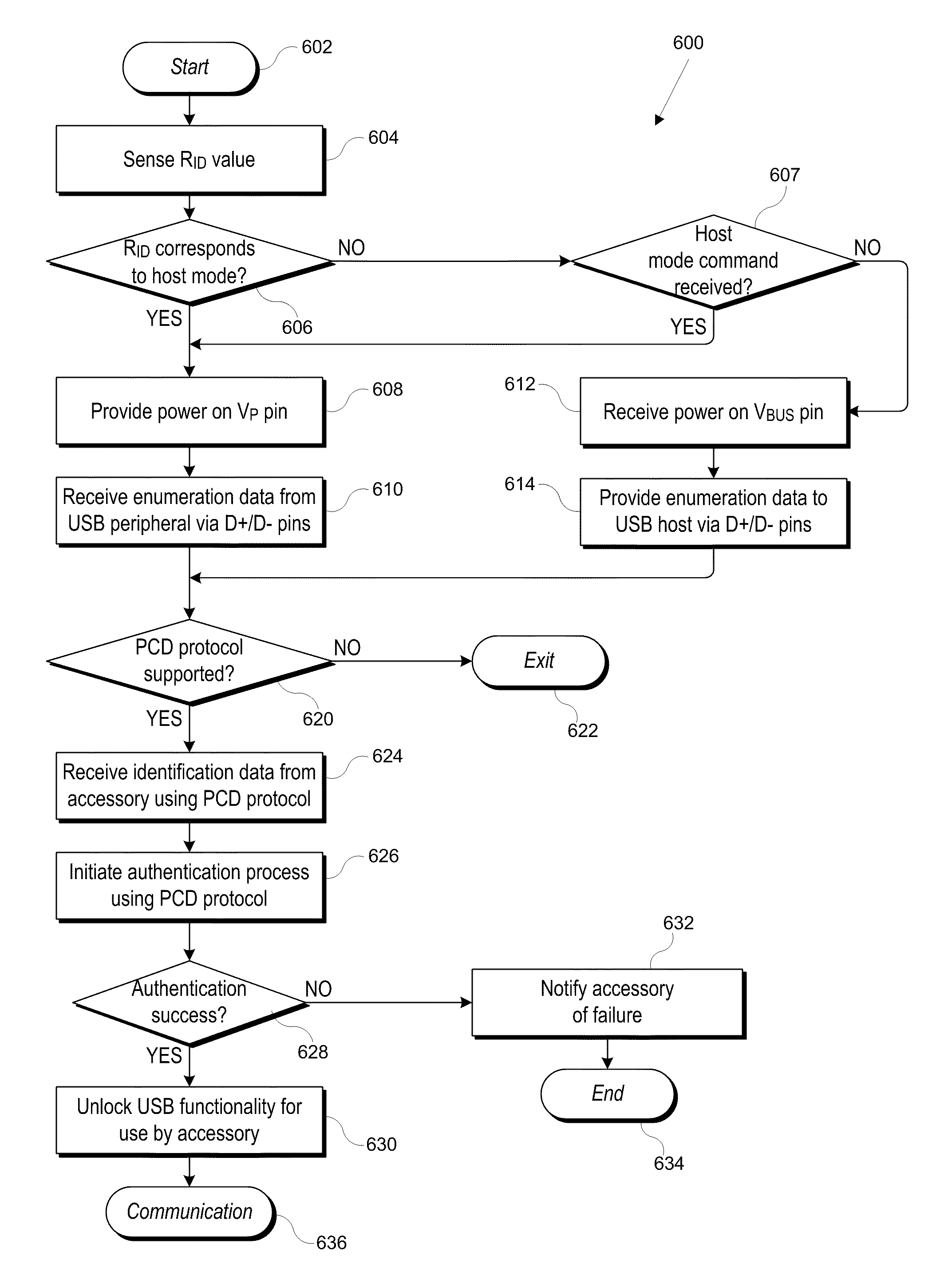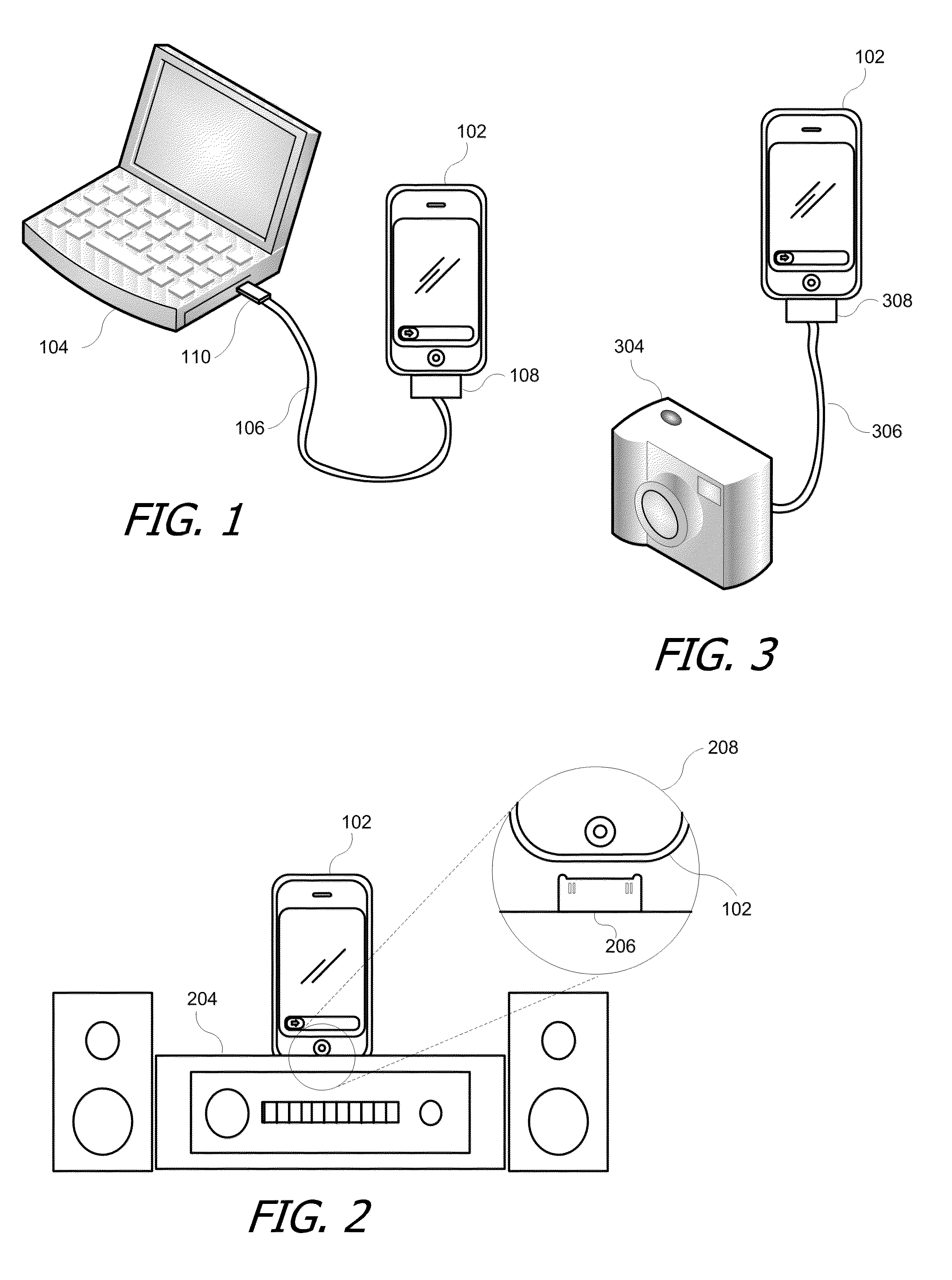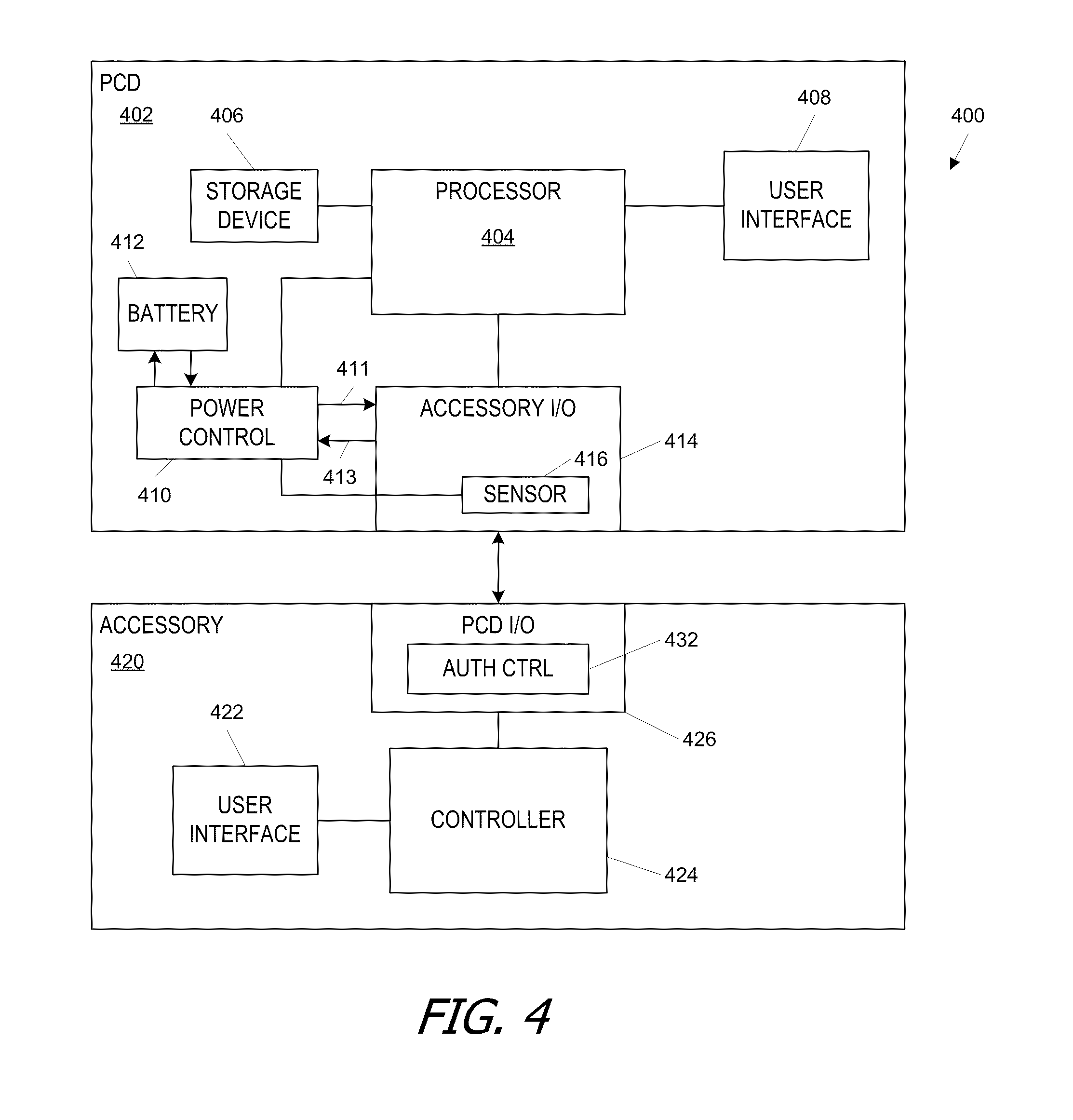Device-dependent selection between modes for asymmetric serial protocols
a serial protocol and mode selection technology, applied in the field of portable communication devices, can solve the problem of limited connection ability of different accessories, and achieve the effect of reducing power consumption
- Summary
- Abstract
- Description
- Claims
- Application Information
AI Technical Summary
Benefits of technology
Problems solved by technology
Method used
Image
Examples
Embodiment Construction
[0015]Certain embodiments of the present invention provide PCDs that can automatically switch into one or another mode of an asymmetric communication protocol depending on the type of accessory connected. In some embodiments, the accessory (which can be any electronic apparatus that connects to a PCD) can signal its preference for whether the PCD should operate in a first mode or a second mode of the asymmetric protocol. Such signaling can be achieved, e.g., using a hardware mechanism such as an identification resistor or a software mechanism such as a command protocol. The PCD can detect this preference and configure itself in the operating mode identified by the accessory. Thus, for example, if the asymmetric communication protocol is a USB protocol, the accessory can indicate whether the PCD should operate as a USB host or a USB device.
[0016]FIGS. 1-3 illustrate a PCD docked (or connected) to accessories according to embodiments of the present invention. In FIG. 1, PCD 102 is doc...
PUM
 Login to View More
Login to View More Abstract
Description
Claims
Application Information
 Login to View More
Login to View More - R&D
- Intellectual Property
- Life Sciences
- Materials
- Tech Scout
- Unparalleled Data Quality
- Higher Quality Content
- 60% Fewer Hallucinations
Browse by: Latest US Patents, China's latest patents, Technical Efficacy Thesaurus, Application Domain, Technology Topic, Popular Technical Reports.
© 2025 PatSnap. All rights reserved.Legal|Privacy policy|Modern Slavery Act Transparency Statement|Sitemap|About US| Contact US: help@patsnap.com



